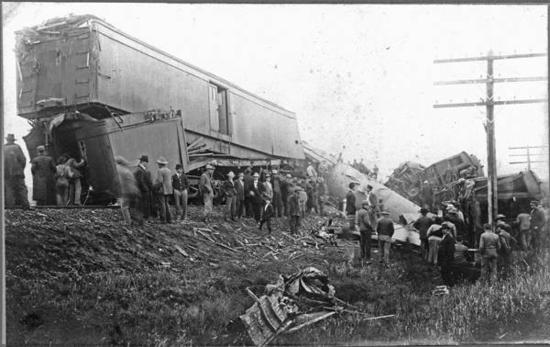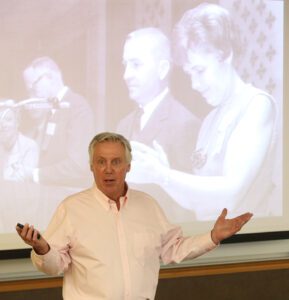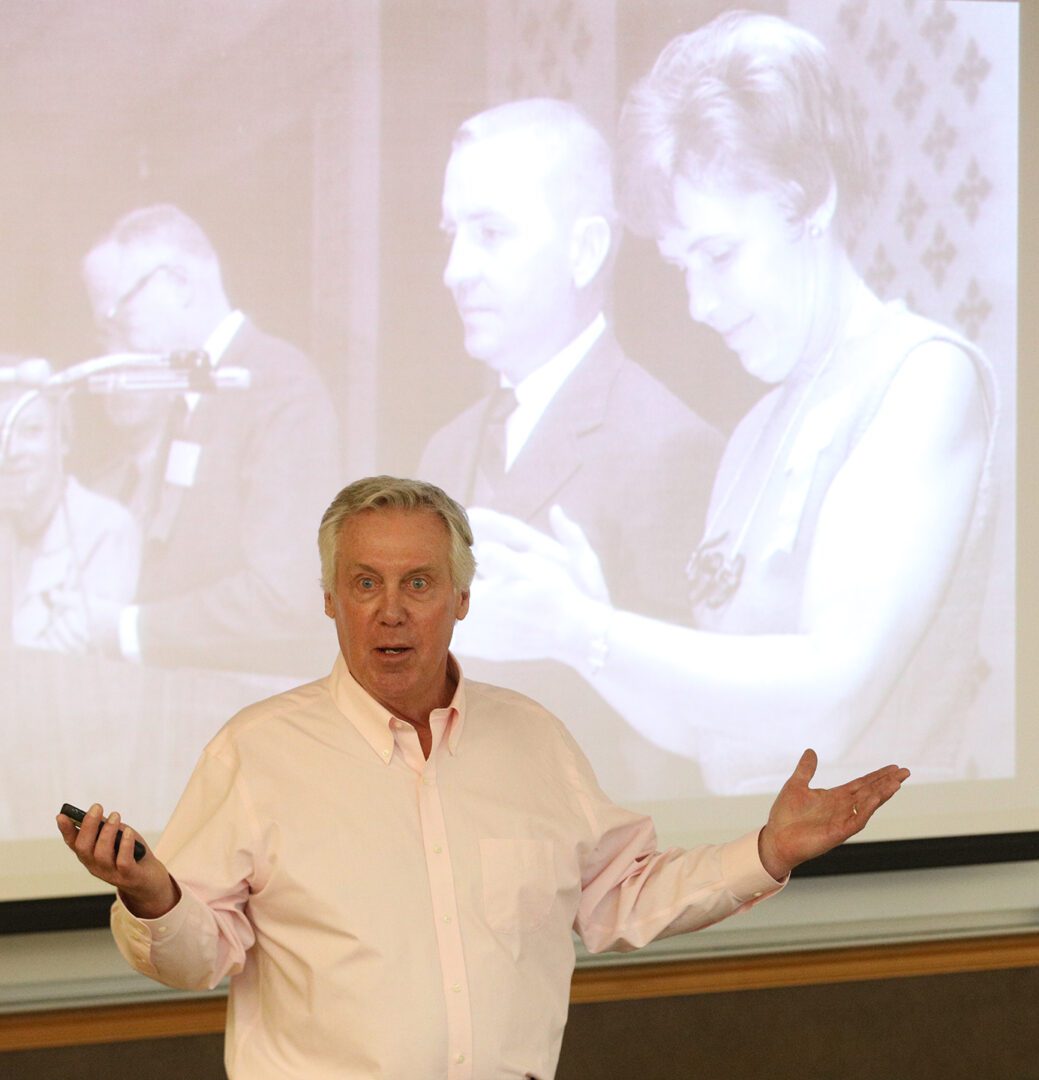In this age of frequent road construction and airport delays, it is tempting to romanticize about the era of steam locomotives, when you could almost instantly hop on a train and travel to virtually any destination in relative comfort.
While trains were efficient and relatively safe, the lives of passengers rested in the hands of but a few crew members, with few redundancies in place, so if something went wrong—such as an accidentally left-open switch—the effects could be catastrophic.
Residents of Monmouth during the late 19th century witnessed calamity on several occasions, but no accident was as horrible as the wreck of C.B.&Q. train No. 5, the Denver express, which occurred near the Monmouth Mining & Manufacturing plant on the night of Oct. 20, 1891.
It had been almost exactly a year since a similar wreck of the fast mail at the pottery, caused by a switch having been left open. Running at 60 miles an hour, that train had crashed into a string of seven cars of coal and tile, injuring four and killing one.
On this night, Train No. 5 had left Galesburg 15 minutes late and was traveling at full throttle when, for reasons unknown, the switch at the 3M plant had been left open and the switch light had been extinguished. The engine ran through the open switch onto the side track but the cars remained on the main track. The engine and most of the cars were derailed, plowing through piles of pottery and down an embankment.
Amidst the sounds of crushing metal, hissing steam and passenger screams, four lives were instantly lost and 28 passengers were seriously injured. Scattered like toys were the remains of the baggage car—which caught fire—three chair cars and a Pullman sleeper car. The last sleeper remained on the track and its occupants barely felt the wreck.
Further tragedy was averted when passenger William Starr, who was ejected out a window and badly injured, rushed down the track frantically waving his coat to alert a heavy freight which was rapidly approaching and would have plowed into the wreck. Most of the passengers escaped through windows and because Monmouth had no hospital, the wounded were initially conveyed to nearby homes. Dr. Taylor, Dr. Webster and other physicians rushed to the scene to treat the wounded.
The engineer and an engineer who was sharing the ride were both killed instantly. The fireman was blown from the engine by the explosion of the boiler and found buried in the loose ground, bruised and scalded.
The greatest destruction was to chair car No. 171, which was virtually torn to pieces. Seated near the middle of the car were George Allen and his wife of Lamoni, Iowa, along with their 22-month-old baby. When the car overturned, Mrs. Allen’s head was driven through the window and she was instantly killed. The baby, who was on her lap, was thrown across the aisle and cut his head.
“The first warning I had of the wreck,” Allen recalled, “the car was tipping over and the lights went out. I first groped around for the baby, whose crying I heard. I found him apparently standing up and got him out of the car. I then tried to get my wife out, but she did not answer me. By going clear to the end of the car I managed to get out. Procuring a lantern I went back. I found her dead.”
The left arm of T.J. Kirby of Lenox, Iowa, was crushed, while the left forearm of John Burner of Forreston, Ill., was torn off.
Frank Johnson, a college student from Avon, Ill., was among the dead—by an accident of fate. He and four other students at Hedding College in Abingdon had been suspended for attending an unauthorized theatrical performance in Galesburg. Johnson and another suspended student were on their way to Monmouth to enroll at Monmouth College. They had just gone out to the platform of the smoker when the crash occurred. Both jumped, but Johnson was killed by a blow on the head from a flying timber.
A coroner’s jury was convened at Blackburn & Turnbull’s funeral parlor to view the bodies before they were released to their families. Most of the wounded were conveyed to Galesburg.
More tragedy occurred the next evening, when Andrew Wiley, a former city marshal of Kirkwood who had come to view the wreck, attempted to climb upon a freight train and slipped. Both his legs were cut off above the knee and one arm was badly shattered.
It was generally believed the wreck was caused by intentional tampering with the switch. Two suspects were arrested, but no specific evidence tying them to the wreck could be found. The railroad superintendent said the switch was found partly thrown, with the lock gone and the pin out, and the target light had also been extinguished. Seven trains had passed the spot since it had been last thrown, so he was certain foul play had occurred shortly before Train No. 5 made its approach.
Another point of controversy was the type of switch installed. Known as a face-pointed switch, in which the ends of the rails on the switch face the approaching train, they had been virtually abandoned elsewhere in the country due to their propensity for causing derailments.
Like ship captains, engineers of that era were held in high regard for their bravery and dedication. Perhaps best known was Illinois Central engineer Casey Jones who, would be immortalized in song for his efforts to save passengers in a 1900 train wreck. A ballad might have also been written about Train No. 5’s engineer A.A. Emery. After having been jokingly blamed by the conductor for making the train late, he announced as the train left Galesburg: “All right; hold onto your hats this time,” and sent the train hurtling toward Monmouth. When the open switch was encountered, he immediately assessed the danger, reversed the engine and stayed heroically at his post as death approached.
For Maple City Memories, I’m Jeff Rankin.














